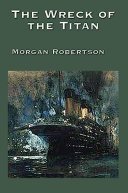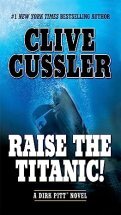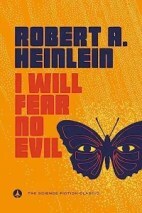Visions of Tomorrow by Kait Carson
Being a writer is a funny thing. We sit at home (or in a coffee shop, or in a library, or wherever) and make up imaginary worlds. Readers want to know how we get our ideas. Are they snippets of thoughts that we pluck from the ozone? Ideas waiting to be developed and brought to life? Are writers empaths plugged into a cosmic consciousness? Do writers use that empathy to predict the future?
 Morgan Robinson’s novella, THE WRECK OF THE TITAN, written in 1898, told the story of the world’s largest ship, The Titan. She sank after hitting an iceberg in the North Atlantic—in April. Her massive loss of life was a result of a shortage of lifeboats. Parallels to the 1912 Titanic tragedy are chilling and inescapable. The Titanic’s ultimate resting place was unknown until Bob Ballard’s Woods Hole expedition discovered her in 1985. Clive Cussler’s protagonist, Dirk Pitt, discovered the missing ship in his 1976 book, RAISE THE TITANIC. Pitt’s Titanic was intact, but details of the wreck and the debris field surrounding her echo those described by Ballard in haunting detail.
Morgan Robinson’s novella, THE WRECK OF THE TITAN, written in 1898, told the story of the world’s largest ship, The Titan. She sank after hitting an iceberg in the North Atlantic—in April. Her massive loss of life was a result of a shortage of lifeboats. Parallels to the 1912 Titanic tragedy are chilling and inescapable. The Titanic’s ultimate resting place was unknown until Bob Ballard’s Woods Hole expedition discovered her in 1985. Clive Cussler’s protagonist, Dirk Pitt, discovered the missing ship in his 1976 book, RAISE THE TITANIC. Pitt’s Titanic was intact, but details of the wreck and the debris field surrounding her echo those described by Ballard in haunting detail.
I.M. Forster’s 1909 short story, THE MACHINE STOPS, and Sarah Pinsker’s 2019 novel, SONG FOR A NEW DAY, could have provided road maps for 2020’s COVID-19 pandemic. Forster envisions a society where people live and work in their rooms and communicate through a devise that resembles Skype. Interesting concept in 1909 before the invention of radio or television. Sarah Pinsker hits even closer to home. Her book, written pre-pandemic, describes a society dealing with a deadly pandemic. Residents not only work from home, but must wear protective clothing any time they venture out.
 Admittedly, science fiction writers, of which Sarah Pinsker is one, have frequently predicted life in the future. My firm introduced the staff to IBM’s OS/6 in 1982. The operation of this state-of-the-art machine sent my thoughts to Robert A. Heinlein’s 1970 novel, I WILL FEAR NO EVIL. IBM introduced its technology in 1977. Seven years after Heinlein’s Eunice Branca saves the day through her proficiency with the tool. The book, set in the 21st century, foreshadows the violence that fills our headlines daily.
Admittedly, science fiction writers, of which Sarah Pinsker is one, have frequently predicted life in the future. My firm introduced the staff to IBM’s OS/6 in 1982. The operation of this state-of-the-art machine sent my thoughts to Robert A. Heinlein’s 1970 novel, I WILL FEAR NO EVIL. IBM introduced its technology in 1977. Seven years after Heinlein’s Eunice Branca saves the day through her proficiency with the tool. The book, set in the 21st century, foreshadows the violence that fills our headlines daily.
My first novel, CARIBBEAN KNIGHTS, is set in Sint Maarten. One scene depicts a hurricane so severe that the Caribbean Sea washes over the land and joins the Salt Pond. The book, written in 1985, lives under my bed. Although never published, friends on the island served as beta readers. In 1995, several betas contacted me to tell me that Category 4 Hurricane Luis devastated Philipsburg, Sint Maarten, exactly as I described.
How do writers come to write about these futuristic events? The hurricane I described in CARRIBEAN KNIGHTS arrived in a dream so vivid I can still close my eyes and visualize it. As for other writers, perhaps they live with one foot in the future.
Lea Wait's Blog
- Lea Wait's profile
- 509 followers



